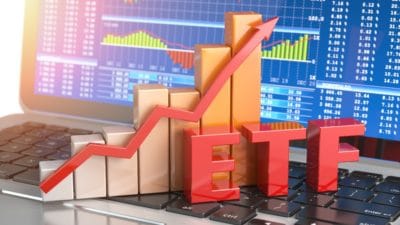Canadian investors looking to maximize their passive-income streams have traditionally turned to a mixture of dividend stocks, REITs, or corporate bonds. Some riskier investors may even chase higher yields by buying covered call exchange-traded funds (ETFs) or preferred shares.
However, there is yet another alternative — one with great potential for passive income and a chance at share price appreciation. I’m talking about income funds.
These are investment vehicles, usually organized as a trust or partnership, that invest in various assets with the goal of providing tax-efficient distributions to their investors.
Like stocks, shares of income funds trade on exchanges and can be bought and sold easily. They prioritize high current income and make consistent payments on a monthly or quarterly basis.
Canoe EIT Income Fund
Canoe EIT Income Fund (TSX:EIT.UN) invests primarily in the public equity and fixed-income markets of Canada and the United States, primarily holding an assortment of large- and mid-cap growth and value stocks and some debt securities.
EIT.UN is unique in that it has a high distribution yield and a low, sustainable payout ratio. Currently, the income fund pays a distribution of $1.2 per share, which works out to a yield of 8.34% at its current share price of $14.38. The payout ratio is 25.29%, which is healthy and reasonable.
What’s more incredible is that EIT.UN has posted an incredible five-year average distribution yield of 10.96%. Year to date, EIT.UN has posted a decent 8.12% return without any distributions reinvested, capping off a nice recovery since the COVID-19 crash of March 2020.
Chemtrade Logistics Income Fund
Chemtrade Logistics Income Fund (TSX:CHE.UN) is the publicly traded ticker for Chemtrade, an industrial chemicals production and services company that deals in various sulphur products, water solutions, specialty chemicals, and electrochemicals across Canada and the U.S.
CHE.UN currently pays a distribution of $0.6 per share, which works out to an annual yield of 7.64%. The income fund also has a great five-year average distribution yield of 10.60%. However, CHE.UN is riskier, with shaky fundamentals, such as a -47.73% return on equity and -17.19% profit margin.
CHE.UN’s performance is also tied to the cyclical energy sector, which gives it a higher volatility, exemplified by its beta of 1.59 vs the market at 1.00. Year to date, CHE.UN is up 6.51% but is down 58.45% over the last five years. Investors should buy with caution and have an exit plan ready.
The Foolish takeaway
Investors looking to diversify a passive-income-oriented portfolio should consider adding various income funds like EIT.UN and CHE.UN. These income funds often offer a higher yield than most dividend stocks and REITs and have a different risk profile.
Therefore, by buying shares of them investors can gain a slight diversification bonus. As with all funds, ensure you keep up to date on their financials and the outlook for their underlying holdings. Make sure you also have a stop-loss set in case any negative material changes tank their share prices.







